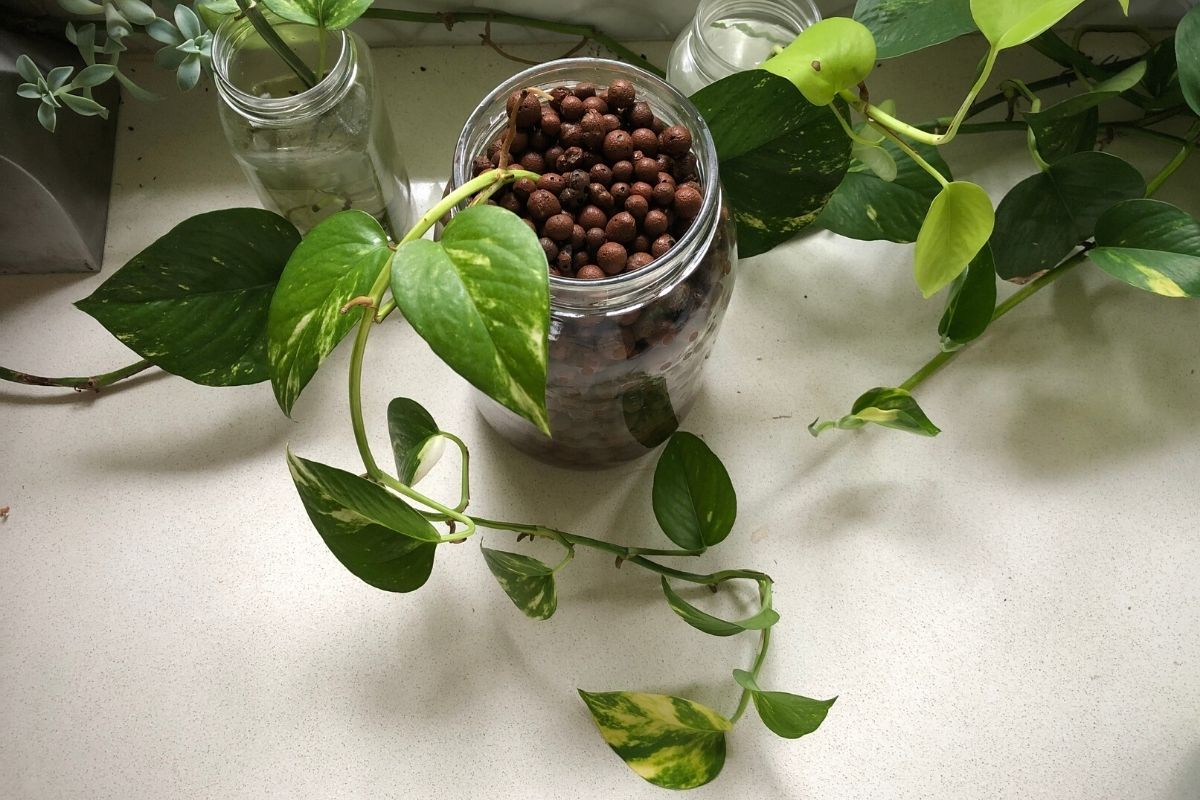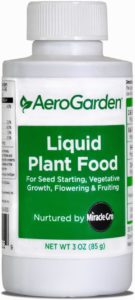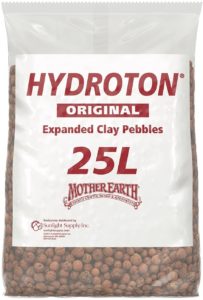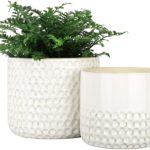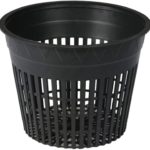Using Leca for plants has become popular among indoor plant enthusiasts, as well as people who need a more convenient plant care strategy due to a busy lifestyle.
The absorbent clay pebbles don’t need to be watered as frequently as the soil does, and since Leca is made of inorganic material, pests can’t survive in it.
It’s an interesting way to actively care for and engage with your house plants, and most plants will grow in it, especially those with hearty roots like monstera, philodendron, and spider plants.
If you’re thinking about trying to grow indoor plants in Leca, knowing how it works will help you decide if it’s the right choice for your home.
What is LECA for plants?
Leca is an acronym, standing for Lightweight Expanded Clay Aggregate. Leca was first created in Missouri in 1917, and has been used as a material in construction as structural reinforcement, in water treatment, and as a soil additive in landscaping and agriculture to improve soil drainage and aeration.
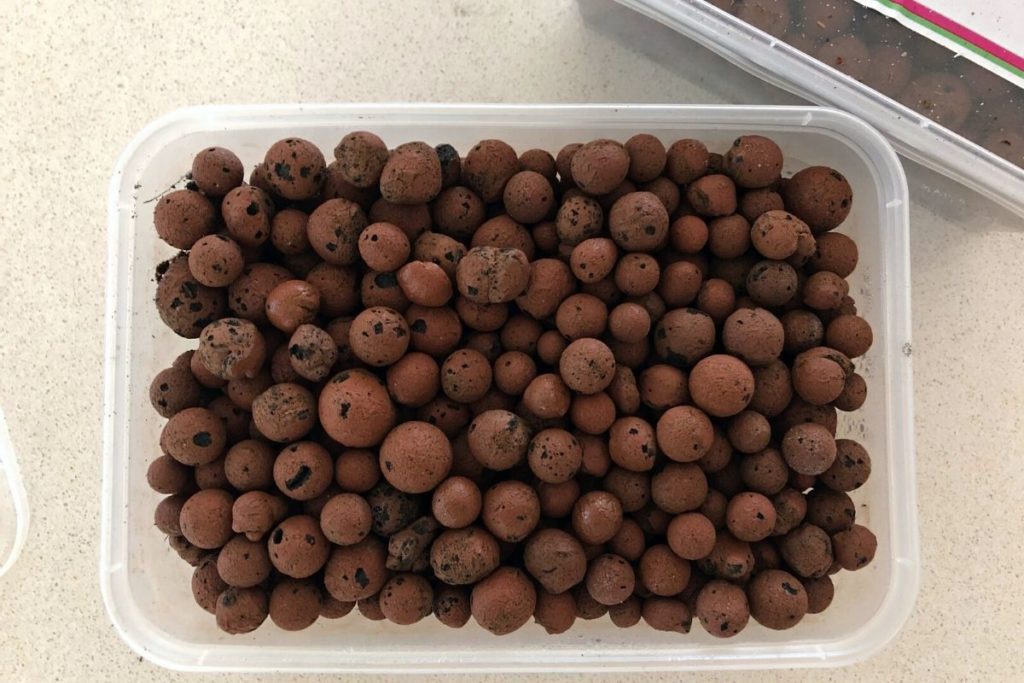
The porous clay pellets have made their way into the home as a growing medium for indoor plants. Leca is a passive hydroponic, or semi hydro, system, meaning the plant only uses water to receive its nutrients, and there is no pump technology. The water is distributed to the plants by the Leca pebbles, which absorb and hold moisture from a reservoir of water at the bottom of the pot.
How is Leca soil made and how does Leca work?
Leca is produced by heating clay in a rotary kiln, which breaks and shapes the material into lots of little balls. These expand and burst as they heat, creating small air pockets throughout the pellets. The resulting clay pebbles have a round shape and porous surface. These characteristics have made it a great choice to grow plants in because they deliver moisture to the plant’s root system without the danger of overwatering.
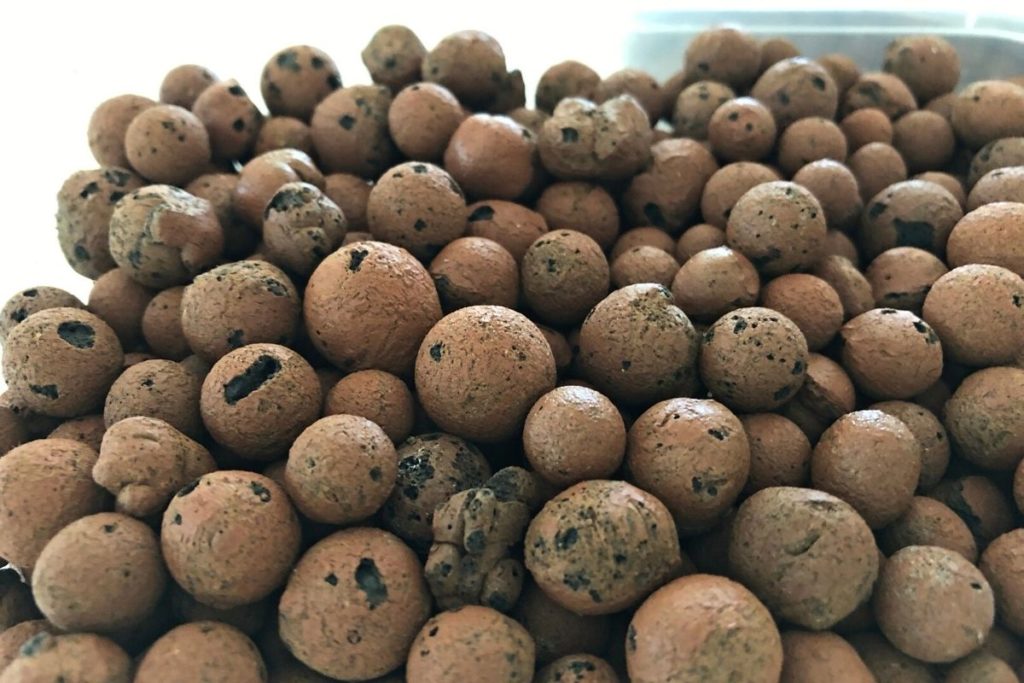
Water is drawn upwards through the Leca balls by a wick system, also known as capillary action: the liquid adheres to the material in the cavities and is propelled upward through the porous network by the water’s surface tension. The porous material can generally draw water up to about 6 inches. This is plenty of room for plants to establish their roots among the clay balls and absorb the water from them.
How do plant roots interact with Leca clay?
Leca provides the structural support that soil otherwise would for the roots to grow and hold up the plant. A plant’s root system will expand, stretching through and around the Leca to find sources of water, which they absorb through their root hairs.
In all types of hydroponic systems, plant roots absorb nutrient molecules in the water and distribute them throughout the plant. When you use Leca as a growing medium, a liquid semi-hydroponics fertilizer is essential to provide nutrients to the plant to keep it happy.
Why do I need to use fertilizer when using Leca beads?
Unlike soil, Leca is an inorganic material and it provides no nutrients of its own. Added fertilizer in the water is the only way the growing plants can receive the nutrients they need to survive.
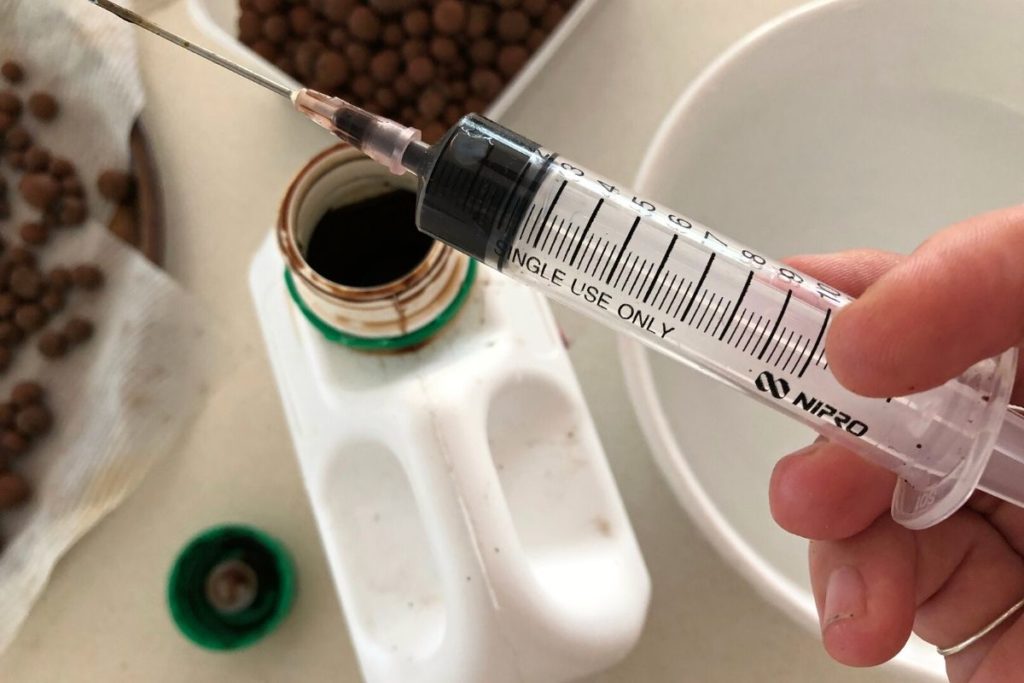
A liquid nutrient solution for indoor plants will be balanced with the necessary macro and micronutrients that feed the plant. These would normally be broken down and made available by the microbiome in the soil, but the fertilizers contain the right nutrients that are isolated and immediately available in the water.
Before you water your plants in a Leca system, you have to check the water’s pH level. The pH level is important because some vitamins and minerals are only available to plants within a certain pH range. For hydroponic systems, you can purchase a pH balancing product that will increase or decrease the acidity of the water based on your test results. Always follow these directions closely for the best results.
Benefits of using Leca balls for plants
Growing plants in Leca has gained in popularity because of several strengths it has as a growing medium. It isn’t necessarily better than soil, but it’s a different option if you could benefit from any of its characteristics, or if you like the look.
- Leca makes watering easier by the clay pebbles’ wicking process, which distributes water to the plant’s roots slowly. Overwatering is one of the most common indoor plant problems, and when done right, a Leca watering system will keep your indoor plants sufficiently hydrated. The water will deplete only as quickly or as slowly as the plant itself absorbs it. For this reason, you can water the plants less frequently when using Leca.
- Fungus, microbes, spider mites, and fungus gnats live in wet soil. When you use Leca balls, there’s little chance these could survive on the inorganic material with nothing to feed on.
- Reusing Leca is easy, since it doesn’t decompose or deplete over time.
- The clay balls provide an open-air structure that allows the root system to get lots of oxygen while remaining hydrated. A lack of oxygen is a primary cause of root rot, frequently due to water-saturated soils from poor drainage or overwatering.
- Leca requires less maintenance than organic matter. It’s less messy than soil, and as mentioned, your indoor plants require less frequent watering when using expanded clay. Because of the way the clay pebbles and roots are arranged in the pot, you always will fill it to a specific level, taking the guesswork out of how much water the plant needs.
How to prepare Leca for plants
The way you arrange the Leca is very important to support healthy plant growth. You have to provide some space at the bottom of the container (about 1/3 of the pot) to keep the roots out of the water supply and avoid root rot. This buffer allows the water to sit, be absorbed by the expanded clay, and irrigate the plant while keeping the roots dry and healthy.
To prepare the Leca and put in a plant, you will need:
- water
- a pH tester for water
- pH balancer
- hydroponics fertilizer
- clean Leca pebbles
- a plant whose roots are clean of all soil
- a net pot
- a non-porous outer pot (like ceramic, plastic, or glass)
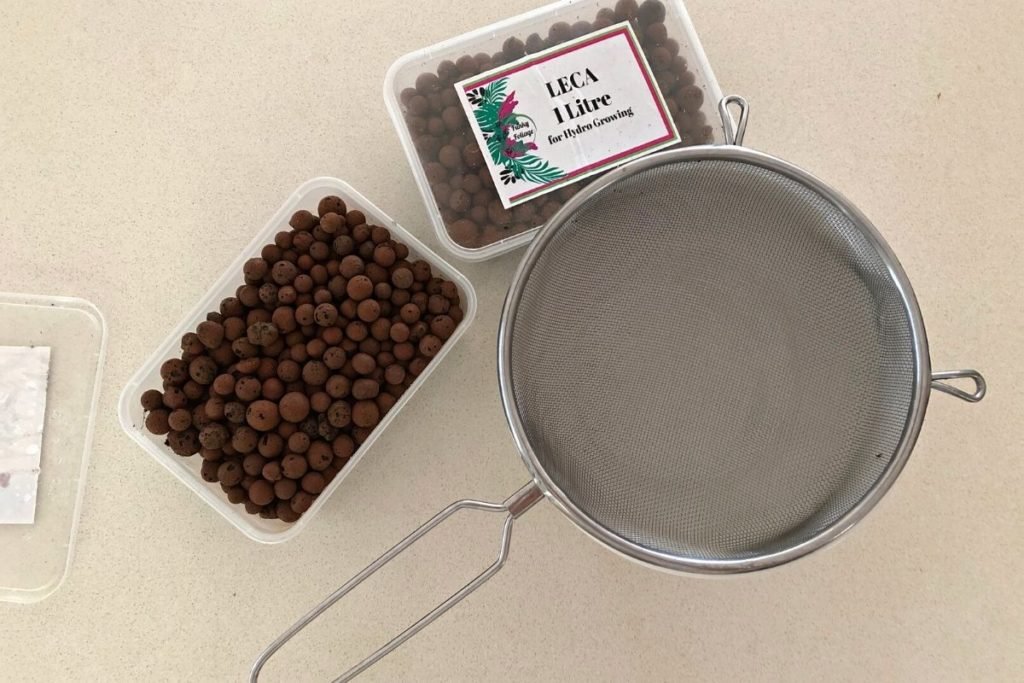
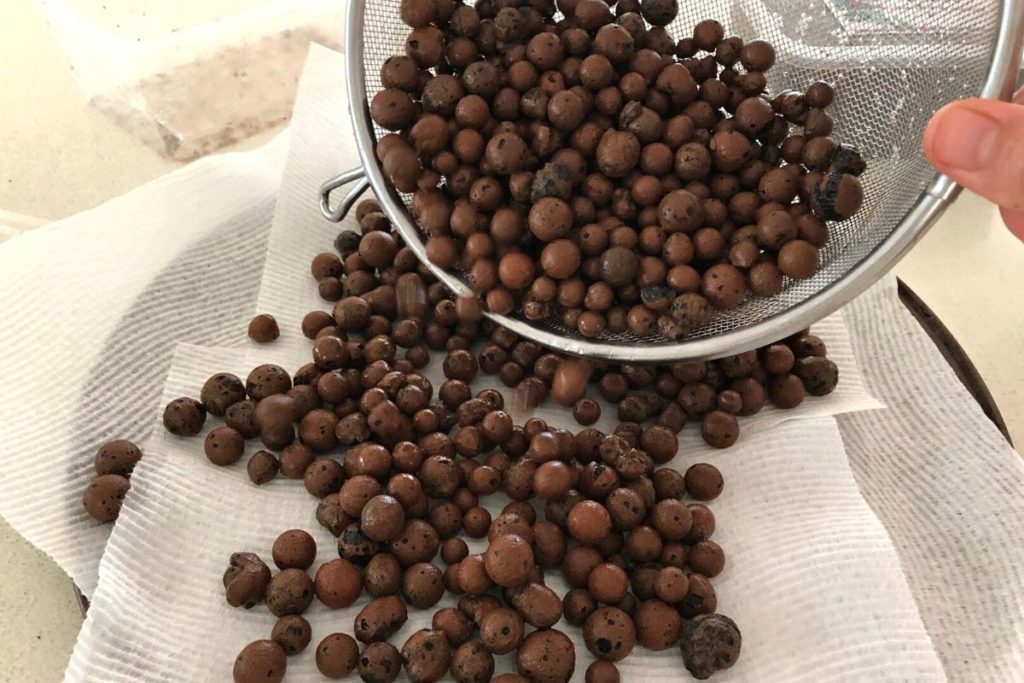
- Clean the Leca pebbles of all of their built-up dust, rinse them out and let them dry for a couple of days, at least 24 hours, before planting in the Leca.
- Test your water’s pH, add any needed balancer, and add liquid fertilizer. Moisten the expanded clay with this fertilized water before adding the plant to the pot; this will jump-start the wicking process.
- Fill a net pot 1/3 of the way with the Leca growing medium.
- Put the plant in the upper 2/3 of the pot, and fill it with the Leca medium as you would with soil: hold it in place and surround it with the clay balls.
- Fill your outer pot with water up to the height of the bottom layer of Leca.
- Put the net pot into the outer pot.
The net pot makes lifting the Leca out for cleaning easier, and allows you to see how much you’re watering into the outer pot. You can measure the amount of water needed the first time and how long it takes to mostly deplete to guide you in your watering schedule.
If you don’t want to use a net pot, you can follow the same instructions and put the Leca and the plant directly in a water-tight pot in the same 1/3 and 2/3 layering method.
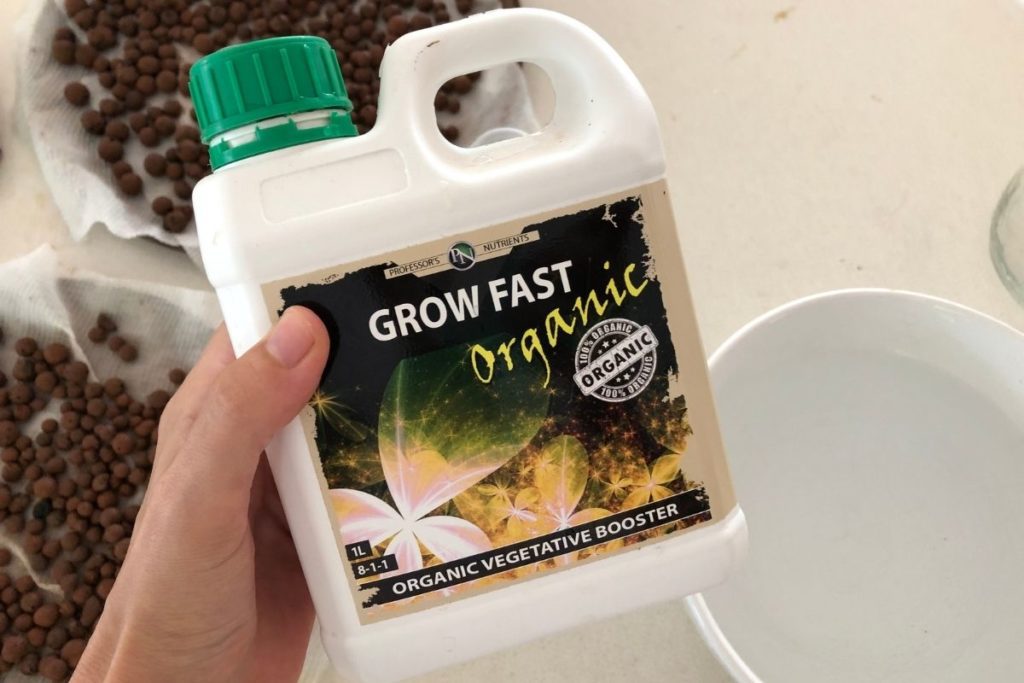
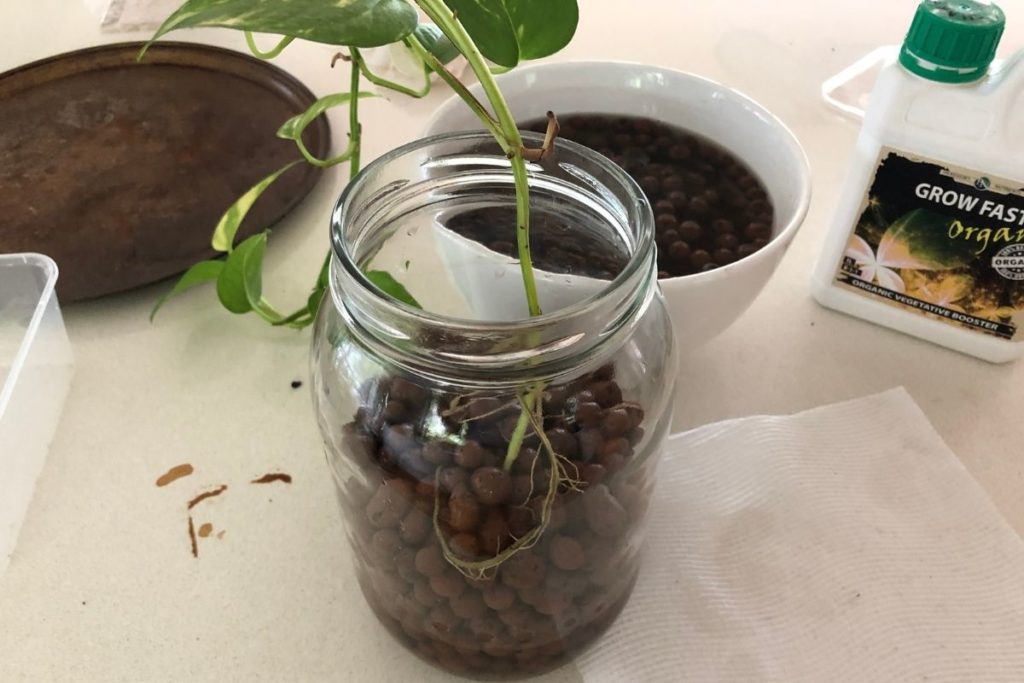
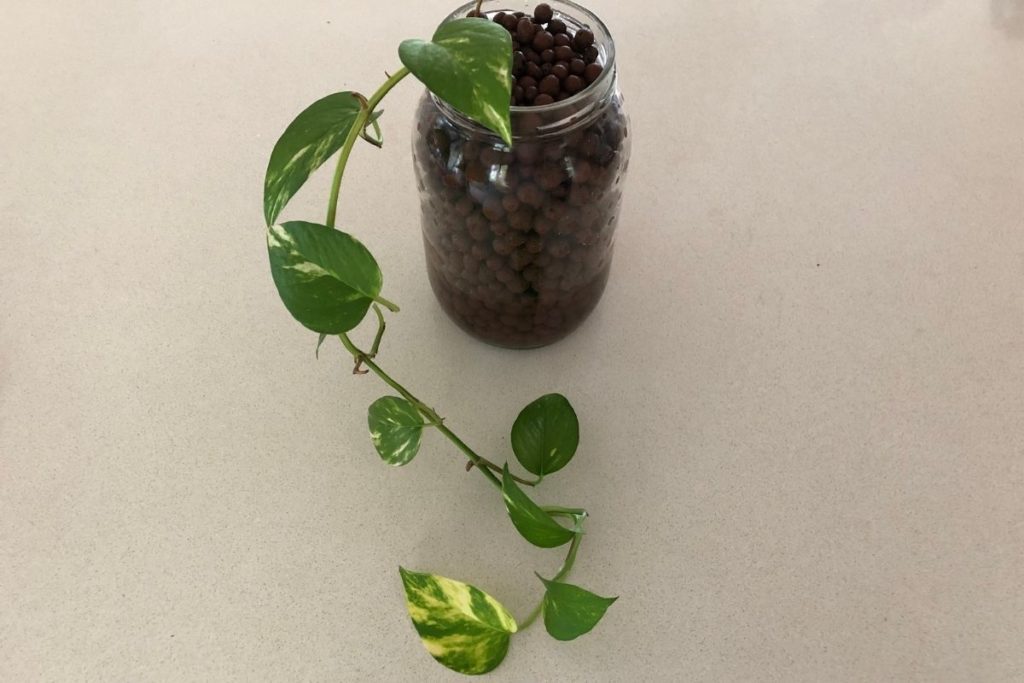
Planting in Leca: How to transfer plants from soil to LECA
When done correctly, transferring plants from soil to Leca isn’t a difficult task, but it is one that must be done carefully to avoid damaging the root system in the transfer.
Plants can succumb to transfer shock when they aren’t able to acclimate to the new growing environment, so be sure to avoid stressful conditions like too much light, or too low or high temperatures during this period. Younger plants are usually better for this transfer.
After the Leca is prepared to accept a new plant, you can follow these steps to transfer it from its old pot:
- Gently remove the plant from the soil (best to do when the soil is dry so it won’t stick to the roots) and rinse any organic matter off of it. The soil can carry microbes that may lead to root rot. Be gentle with the roots to not break them, but abrasive enough to remove any dirt.
- Allow the roots to dry for up to an hour. This will dry up and loosen any bits of dirt that might have remained on the plant, and it will dehydrate the roots just enough that the thirsty plants will eagerly absorb water once planted in the Leca.
- Make sure the 1/3 container buffer is maintained to keep the roots out of the water and prevent root rot. Submerged roots that are in transition will be weaker and more susceptible than usual until they get used to their new situation.
- Be sure to use a hydroponics fertilizer that supports root growth for this transitional period, helping the plant avoid transfer shock. Roots that grow in soil have fewer root hairs than those that grow in water, and they will need to expand and adjust to the new space and method of nutrient delivery.
Leca propagation: How to propagate plants using LECA
Planting a cutting is a great way to get a plant started in Leca. This way, the new roots will grow in adapted to the open-air system and hydroponics fertilizer.
You’ll find the steps to propagating a plant destined for Leca are as simple as for any other propagation:
- Clip a stem from the desired plant with some leaves on it.
- Put the clipping into the prepared Leca pot with fertilized water.
- The plant will absorb moisture from the stones’ pores as it would in a soil or water propagation arrangement.
- As with a soil-to-Leca transfer, be sure to use a fertilizer that targets root health to avoid transfer shock during the transitional period and help the roots grow in strong.
How to clean Leca balls for plants
Expanded clay needs to be cleaned monthly. The cleaning process, known as flushing, is important because nutrients from the fertilizer will build up in the pores of the pellets and disrupt their ability to transfer and hold water. The clay balls shouldn’t be allowed to dry out when a plant is in them since the root system will then be exposed to open air without any moisture.
Flushing the Leca and rinsing off the plant will also help keep buildup off of the roots themselves. When fertilizers dry out, any solids left over on the roots might damage them after a while.
Rinsing off roots when flushing the Leca is particularly good to do for plants that were transported from soil, since it may take a few rinsing sessions to completely clear the roots of all the organic matter from its former home.
Shop our recommendations
- The Best Hydroponic Tower For Indoor Gardening
- 10 Best Worm Composter Bins For Easy Homemade Compost
- The Best pH Meter For Soil
- The 6 Best Dehumidifiers For Grow Tents
- The Best Complete Indoor Hydroponic Grow System
- 5 Best Grow Light Strips For Indoor Plants
- TESTED: Aerogarden vs Click and Grow Smart Garden
- Our *hands on* MARS HYDRO TSW 2000 review (with photos)
- 7 Best Hygrometers For Indoor Plants
- The Best Coco Coir For Your Plant’s Healthiest Root System Ever
- Tags:
- how to
- hydroponics
- leca

